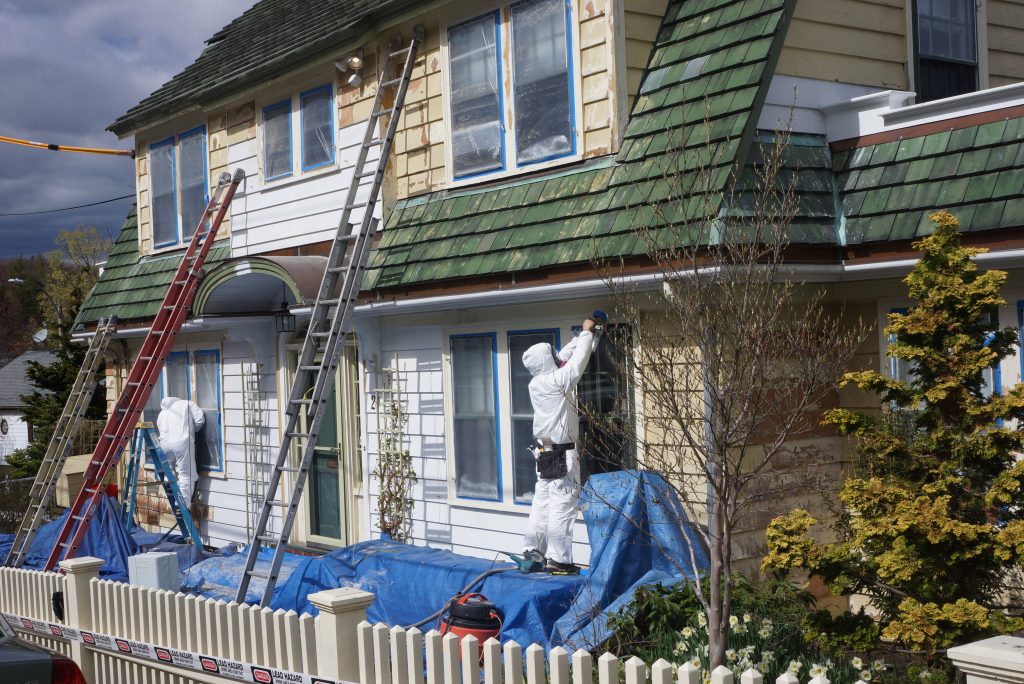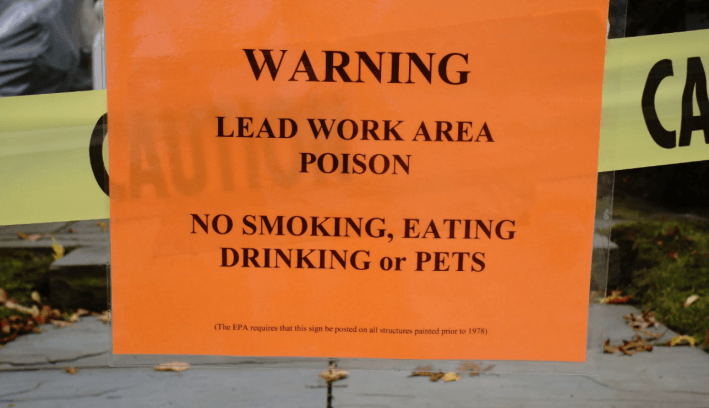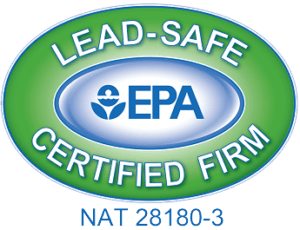The antique and venerable homes of historic New England are beautiful to look at and the innumerable picture postcard images of the classic clapboard homes are unmistakably of a style and vernacular unique to our region. Those of us who live in these homes are all too aware however, that their preservation and painting demand a level of expertise from a painter that far exceeds the basic knowledge required for new house painting. From understanding how aged and brittle paint can lead to alligatoring, peeling and paint failure, the risks of disturbing lead-based paint, to the compatibility issues of mixing oil-based and latex paints, the old house painter must be a master of many skills but more importantly, a curious and observant curator of each old house she or he is engaged with.
Paint Failure and Moisture
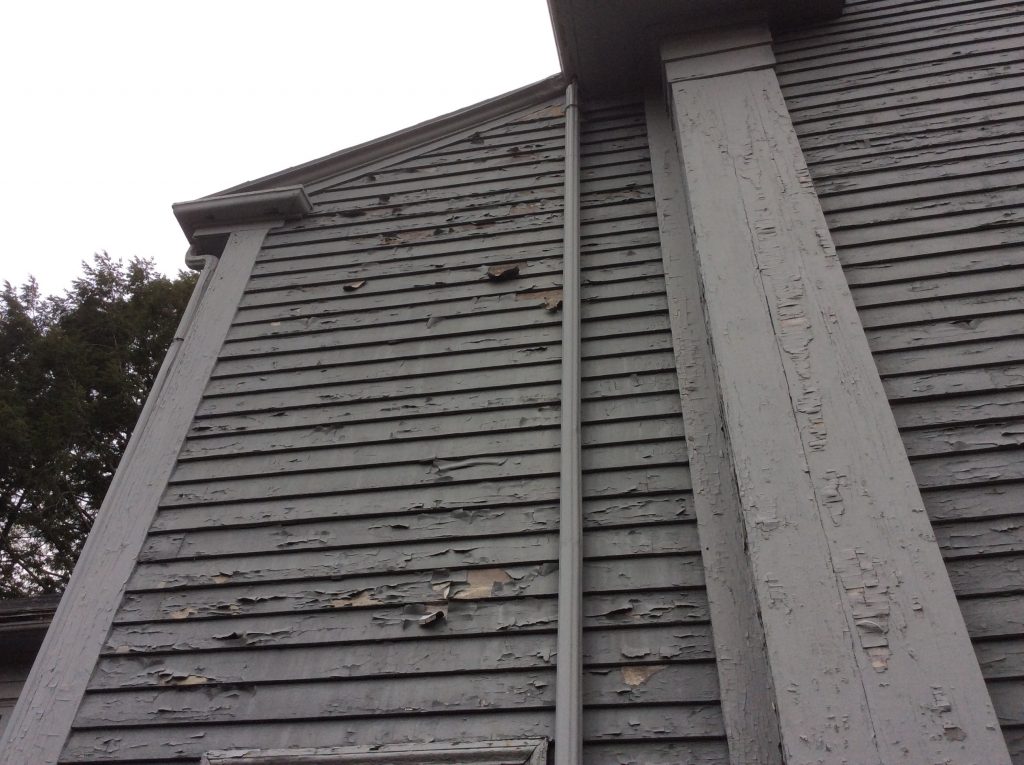 Let us start with a look at the role of moisture in accelerating paint failure. Old american houses sit on stone foundations and a poured cement floor; both surfaces are moisture permeable and so the basement is a damp space. Winter heating of the home draws the moisture up into the home via chimney effect, and this moisture is then pushed through the sidewalls by positive pressure.
Let us start with a look at the role of moisture in accelerating paint failure. Old american houses sit on stone foundations and a poured cement floor; both surfaces are moisture permeable and so the basement is a damp space. Winter heating of the home draws the moisture up into the home via chimney effect, and this moisture is then pushed through the sidewalls by positive pressure. 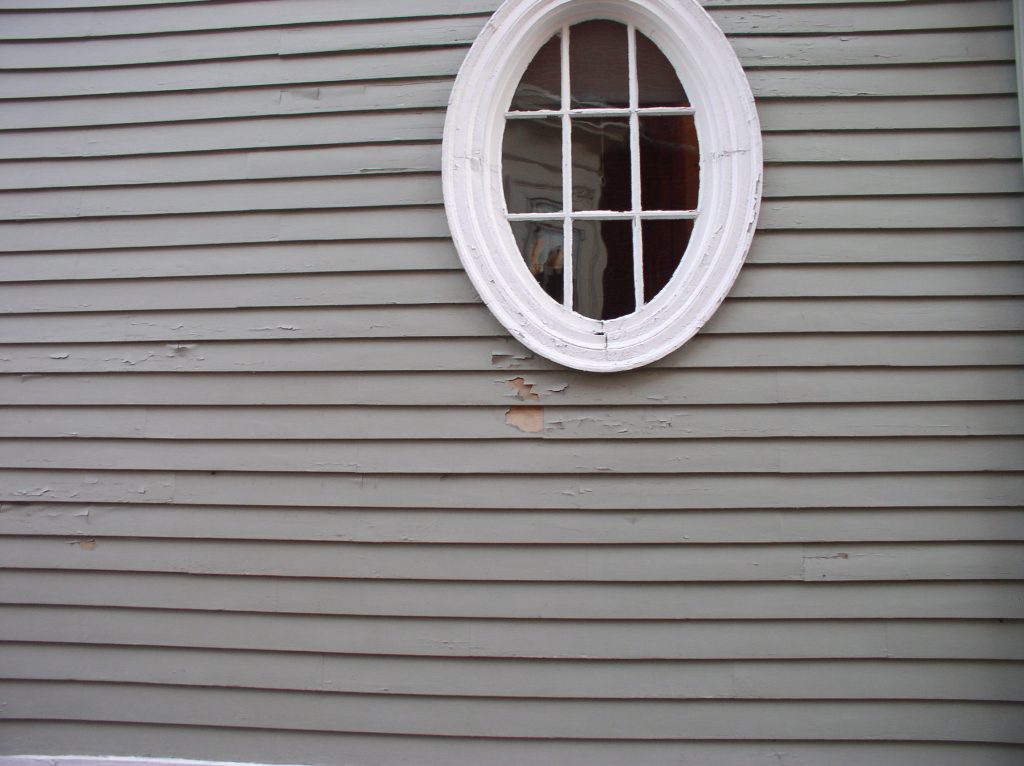 When this moisture meets the many multiple coats of paint on original clapboards, it can lift the paint of the wood completely as the thickened coating has become impermeable. The photograph below (insert is of a Cambridge MA home, built in 1853, shows the various examples of paint failure, including this effect of peeling to bare wood due to moisture transpiration The pervasive visible evidence of alligatored paint is also on view below.
When this moisture meets the many multiple coats of paint on original clapboards, it can lift the paint of the wood completely as the thickened coating has become impermeable. The photograph below (insert is of a Cambridge MA home, built in 1853, shows the various examples of paint failure, including this effect of peeling to bare wood due to moisture transpiration The pervasive visible evidence of alligatored paint is also on view below. 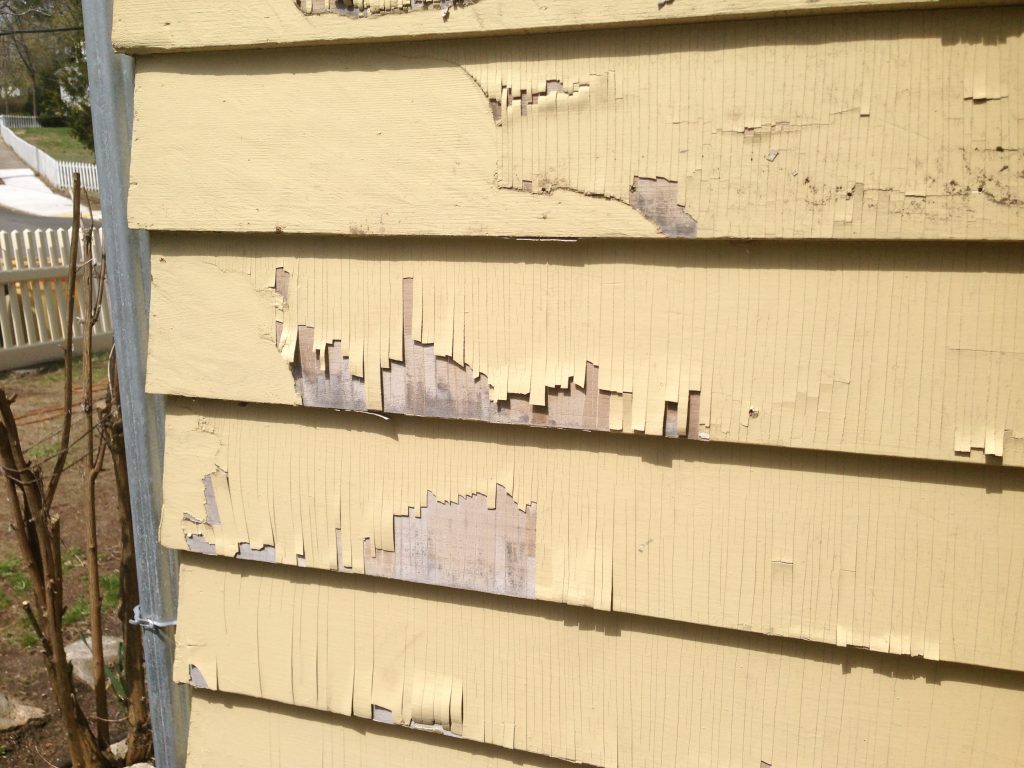 This effect, so called because the paint takes on the texture of alligator skin, is caused by a thickened coatings inability to flex and breathe as the wood it is applied to contracts and expands with temperature and humidity fluctuates. Needless to say, this brittleness causes the coating to fracture then lift and peel. The siding pictured reveals past efforts to remove the lifting paint by manually scraping; the scraped edges of the paint have not been sanded smooth leaving a broken finish, and one more prone to additional peeling. A common mistake we see when less experienced and informed painters work on older homes is coating incompatibility and intercoat delamination. The photograph included below shows latex paint peeling off an older oil based coating; lack of cleaning and preparation of the oil based coating has caused the latex paint to peel in sheets. Latex paint is an excellent coating and performs well in most environments, but it sticks through adhesion and so requires a clean and properly sanded or abraded surface.
This effect, so called because the paint takes on the texture of alligator skin, is caused by a thickened coatings inability to flex and breathe as the wood it is applied to contracts and expands with temperature and humidity fluctuates. Needless to say, this brittleness causes the coating to fracture then lift and peel. The siding pictured reveals past efforts to remove the lifting paint by manually scraping; the scraped edges of the paint have not been sanded smooth leaving a broken finish, and one more prone to additional peeling. A common mistake we see when less experienced and informed painters work on older homes is coating incompatibility and intercoat delamination. The photograph included below shows latex paint peeling off an older oil based coating; lack of cleaning and preparation of the oil based coating has caused the latex paint to peel in sheets. Latex paint is an excellent coating and performs well in most environments, but it sticks through adhesion and so requires a clean and properly sanded or abraded surface.
Renovation, Repair, and Painting Rule
Finally, per EPA regulations, any home built before 1978 is assumed to have lead paint applied to it. Lead paint is a high performing and durable finish but with a poisonous and neurologically toxic downside; proper protocols for preparation or disturbance of lead paint require licensing and strict adherence to these protocols. Failure to budget for the added labor and complication of working with lead paint can be expensive in the former, and dangerous in the latter. The photos included here give an example of the laborious extra steps necessary to account for this risk. 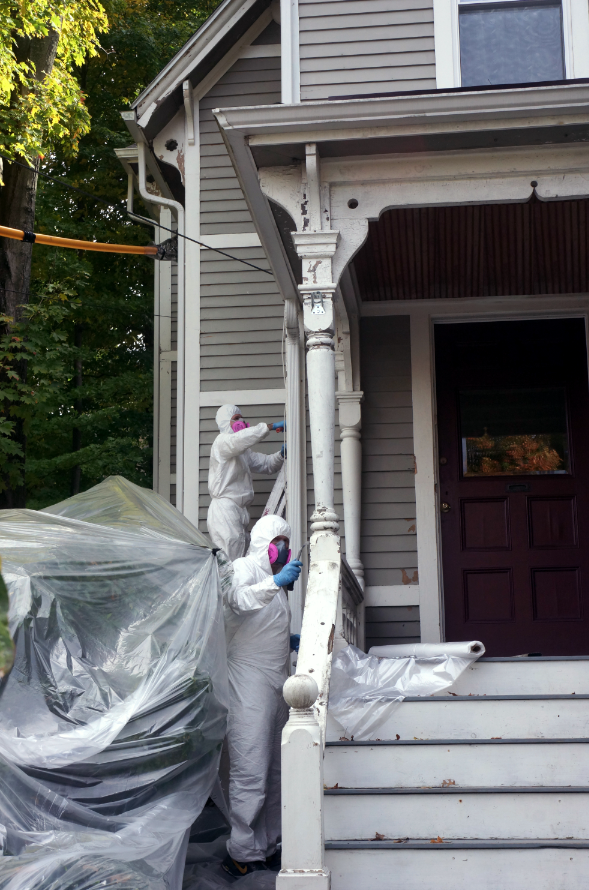 Suffice it to say, repainting antique homes is not for the inexperienced painter. With appropriate observation and knowledge however, and a massive dose of patience and diligence, even the oldest and most venerable home can be carefully preserved for future owners to enjoy.
Suffice it to say, repainting antique homes is not for the inexperienced painter. With appropriate observation and knowledge however, and a massive dose of patience and diligence, even the oldest and most venerable home can be carefully preserved for future owners to enjoy. 